My earliest, and most deeply embedded, memories of Thanksgiving are not of the feast itself nor of visiting family, but of an activity that always took place during the long holiday weekend: Making mincemeat with my dad.
As soon as my two younger brothers and I were old enough to crank the handle, we took turns working the old-fashioned grinder clamped to the kitchen table while my father fed the mysterious mix of ingredients into the top: the off-white chunks of suet, chopped apples, dried and candied fruit, and three kinds of nuts. We were usually gone from the kitchen by the time he doused the fresh mincemeat liberally with liquor and spices, then packed it into a large stoneware crock, which he covered with wax paper and a clean dish towel and carted off to the attic or another cold spot to mellow for the few weeks leading up to Christmas.
Dad would visit the attic every week or so to add more booze, and as I got older, I crept up to there too, lifting the cover to inhale the heady scent and sometimes even scooping out a fingerful of the ripening mincemeat, smoothing the top again so my thievery wouldn’t be detected.
A day or two before Christmas Eve, Dad would portion out the mincemeat into quart-sized canning jars; some we kept for my mother to bake into tarts for our Christmas dinner, the rest he gave away to a select group of friends who appreciated the unusual treat. (Even people who turn up their nose at the mention of mincemeat tend to like Dad’s; I’ve converted quite a few disbelievers over the years.)
A PROJECT ALL HIS OWN
For most of their married life, my mother was the family cook and baker. But aside from his children’s minimal help, mincemeat was my father’s project alone. I knew that it had its origins in his English family, but never asked too many questions about the annual ritual, accepting it as much a part of my upbringing as watching my father in his vestments process slowly up the church aisle every Sunday and twice on Christmas Eve.
The Rev. Christopher Sherrill, known to all as Kit, was ordained to the Episcopal priesthood when I was a toddler and retired from his last parish – Trinity Church in Princeton, New Jersey – about 15 years ago. He and my mother now live on Southport Island, where he has preached at a seasonal chapel for many summers, and where he still, at 80, makes mincemeat every year around Thanksgiving.
He uses that same old-fashioned grinder, clamped to the table in a kitchen with a view of carefully tended gardens and the woods beyond. On a recent morning, I took a turn cranking it for the first time in many years, as I finally asked my dad why he makes mincemeat.
“It connects me to my roots,” he said. “It was one of those traditions that I loved growing up, and it was important for me to have some sense of connectedness back to the family.”
Christmastime 1946 is the first time he recalls making the British holiday dish with his mother, Toni, and grandmother Kitty. He was 11 years old, living in western Pennsylvania, and “the war had been over for a year, so we could get the ingredients.”
The mincemeat was made into small pies that the family distributed, along with lemon curd tarts, also homemade, to “a small group of friends, always on Christmas Eve before or after church,” he said.
THE MAINE CONNECTION
The women were actually his stepmother, Toni, and her mother, Kitty Boylin, who was born in England. Dad’s mother, Edith, also from England, died of pneumonia in Warm Springs, Ga., when he was 2. My broken-hearted grandfather took my dad and his 4-year-old brother, Charles, to live with his late wife’s family near London; the boys returned to the United States about two years later, on one of the last ships to sail before the city was bombed by the Germans.
Having by then married Toni, a stylish, wonderfully creative woman I adored, my grandfather reunited with his sons, and the family settled in a farmhouse outside of town in Beaver Falls, Pa., where Kitty ran a busy photography studio my grandfather joined.
Kitty, who lived in great health well into her 90s, was also our family’s Maine connection. She had a small cottage on Southport Island, where my parents spent their honeymoon in the late summer of 1961. Charismatic yet no-nonsense, Kitty was the reason my father, as a young clergyman, was first asked to serve at the island’s summer chapel, All Saints by-the-Sea. My brothers and I called her Kitsy; we drank the milky tea she made us without slurping and minded our manners when she was nearby.
The mincemeat “was Kitty’s recipe,” Dad said. “She always said they made mincemeat up in Birmingham, England” where she had emigrated from as a young woman in 1910. “But I always had the feeling it came out of Mrs. Beeton’s.”
WHAT, NEVER HEARD OF MRS. BEETON?
“Mrs Beeton’s Book of Household Management” was first published in 1861 by Isabella Beeton, who despite the current celebrity status of Nigella Lawson and Jamie Oliver, remains Britain’s most famous cookery writer. A copy of her book would certainly have been in Kitty’s household when she was growing up.
Indeed, Dad’s recipe – he keeps three copies, one typed, the other two hand-written on sepia-toned index cards – is nearly identical to Mrs. Beeton’s, except that it does not contain actual beef in addition to suet (beef fat). Dating back to the 13th century, the earliest recorded recipes for mincemeat included a good amount of beef and were more savory than sweet. According to John Ayto, writing in “An A-Z of Food and Drink,” the inclusion of dried fruit dates back to Renaissance times when it was a way to “eke out (expensive) meat.” Mincemeat pies were associated with Christmas as early as the 16th century.
Dad’s recipe includes about two pounds each of all the ingredients that go through the grinder: beef kidney suet, raisins, currants, apples, nuts and candied citron and citrus peels. Next he adds the zest of four lemons, a variety of spices, a glug of “aged” apple cider and a “generous cup” each of brandy and sherry.
“You don’t have to be terribly accurate measuring,” he said.
TOUGH ON THE HANDS
But you do need to chop everything up in advance, a laborious process that takes him a couple of hours and taxes his hands, which now tremble slightly from Parkinson’s disease. For the nuts, he uses a four-sided chopper in a wooden salad bowl, an “old, inefficient way” he admits, and an example of his preference for low-tech kitchen tools. When food processors first came on the scene in the 1970s, he tried – once – to streamline the process. The result was a mushy mess, so it was back to the grinder, which he picked up at a rummage sale in 1965.
At that time, we were living in a housing development just outside of Pittsburgh, where Dad served in his first parish and first made mincemeat on his own. He’s made it every one of the 50 Novembers since.
“A couple of years, it’s been iffy because we were busy, or tired, or didn’t have much money,” my Mom chimed in. “But I thought if he didn’t, the world would come to an end.”
While he uses a computer for email and making travel arrangements (as I write this, my parents are on their way to England to attend the memorial service for the last of his mother Edith’s eight siblings, Dorothy, who died last month at 107), Dad keeps track of each year’s mincemeat recipients on an index card filled with his precise handwriting.
PART OF THE MINISTRY
In a way, delivering the jars is part of his ongoing ministry.
“It’s such a pleasure to take it to people that just love it,” he said. “There’s a woman your mother used to play bridge with, and she’s pretty much a shut-in now, but I knock on the door (with the mincemeat), and she just lights up. I get to visit with her and she doesn’t get out to see that many people, and it’s good all the way around.”
Always adept in the kitchen (he can also sew and build things), my father spends more time there lately, cooking dinner at least a couple nights a week and researching new recipes. He said he usually likes to make the mincemeat starting in the late afternoon and finishing in the evening, “a nice, contemplative way to end the day.”
As I watched him pack the crock, it occurred to me that he prefers culinary tasks involving process: preparing ingredients for a Chinese-style meal cooked in the wok, baking bread, making (wonderful) strawberry ice cream in an old-fashioned crank freezer with ice and rock salt. And mincemeat.
“I do enjoy that you can see what you produce,” he said. “It’s not like working with people on their spiritual journeys … you never know what’s going to happen there.”
Kit Sherrill’s Mincemeat
Adapted from “Mrs. Beeton’s Book of Household Management” (1861). Kit Sherrill uses a mix of almonds, walnuts and pecans for the chopped nuts.
Yields 7-8 quarts
2 pounds beef suet, cut into chunks (you may have to ask your butcher for it in advance)
2 pounds raisins
2 pounds currants
2 pounds apples, peeled, cored and quartered
1 pound candied citron
½ pound each candied orange and lemon peel
2 pounds chopped nuts
3 cups sugar
Zest and juice of 4 lemons
1 teaspoon ground cinnamon
1 teaspoon nutmeg
1 teaspoon ginger
1 teaspoon allspice
1 teaspoon cloves
½ cup orange juice
1 cup brandy
1 cup hard cider
1 cup sherry, plus more to add as mincemeat “ripens”
Using an old-fashioned meat grinder, put suet, raisins, currants, apples, citron, candied orange and lemon peel and nuts through in batches, alternating ingredients so the resulting mixture is well-combined.
Add sugar, lemon juice and zest, spices, orange juice and liquor, mixing well.
Pack mincemeat into stoneware crock or other large container, allowing for several inches of room at the top.
Store in a cold place for 3 to 4 weeks to ripen, adding additional brandy and sherry every week or so.
Pack mincemeat into jars and store in refrigerator. Keeps at least a year.
Leigh Sherrill’s Mincemeat Tarts
The yield of this recipe as well as the baking time depend on the size of your tart pans.
Pie pastry for a double crust pie
Mincemeat (homemade or purchased)
Confectioners’ sugar, for serving
Preheat the oven to 400 degrees F. Lightly coat tart pans with baking spray.
Roll out the pie pastry and cut into rounds large enough to fit into tart pans. Place a round in each tart shell.
Fill pastry shell with mincemeat and top with another round of dough, crimping the edges to seal. Using a fork, prick a few holes in the top crust.
Bake for 15-25 minutes, until the crust is golden brown. Let tarts cool about 10 minutes in pans, then gently remove.
Dust with confectioners’ sugar and serve warm. (These can be made ahead and reheated.)
Mincemeat Hermits
A newspaper clipping dated Dec. 5, 1974, supplied this recipe; writer Susan Axelrod’s mother no longer remembers which newspaper.
Yields about 26 cookies
½ cup butter
½ cup brown sugar
1 egg
1½ cups all-purpose flour
½ teaspoon baking soda
½ teaspoon salt
½ teaspoon cinnamon
½ cup mincemeat
Preheat the oven to 375 degrees F. Butter a large baking sheet.
In a large bowl, cream the butter with the brown sugar; beat until fluffy.
Add egg and mix well to blend.
Sift in flour, baking soda, salt and cinnamon.
Add mincemeat and mix well.
Drop by teaspoonfuls about 1½ inches apart on prepared baking sheet. Bake for 12 minutes or until firm.
Store in an airtight container.
Send questions/comments to the editors.

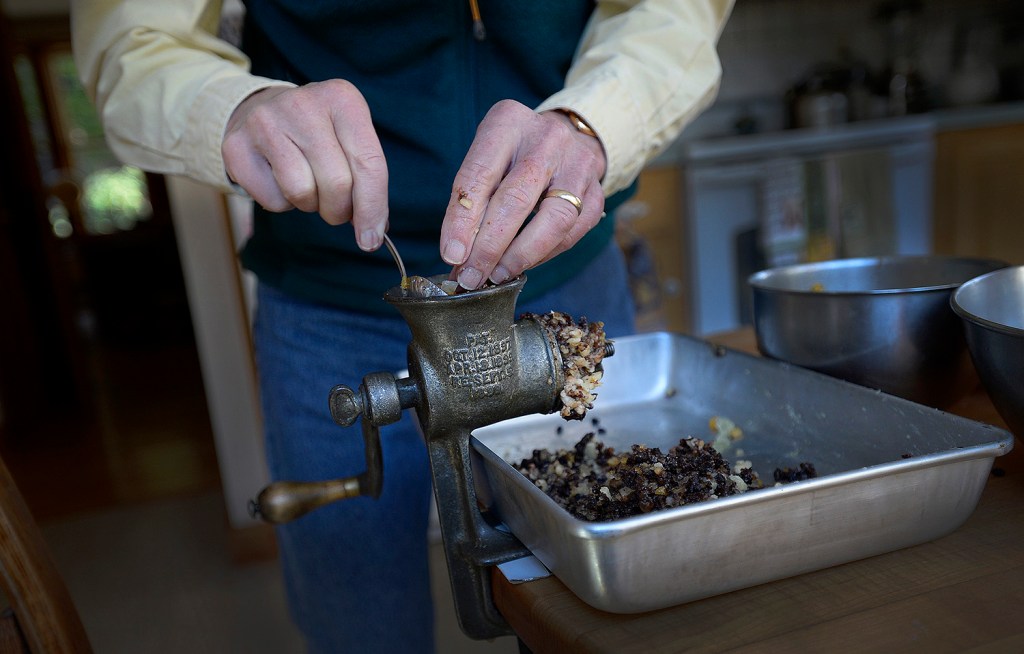
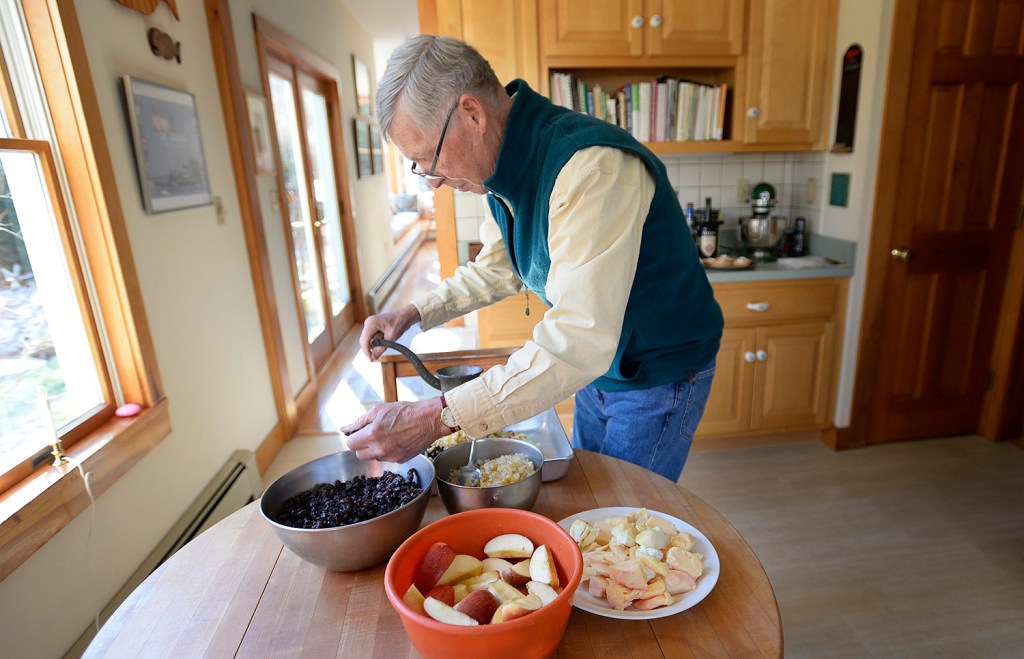
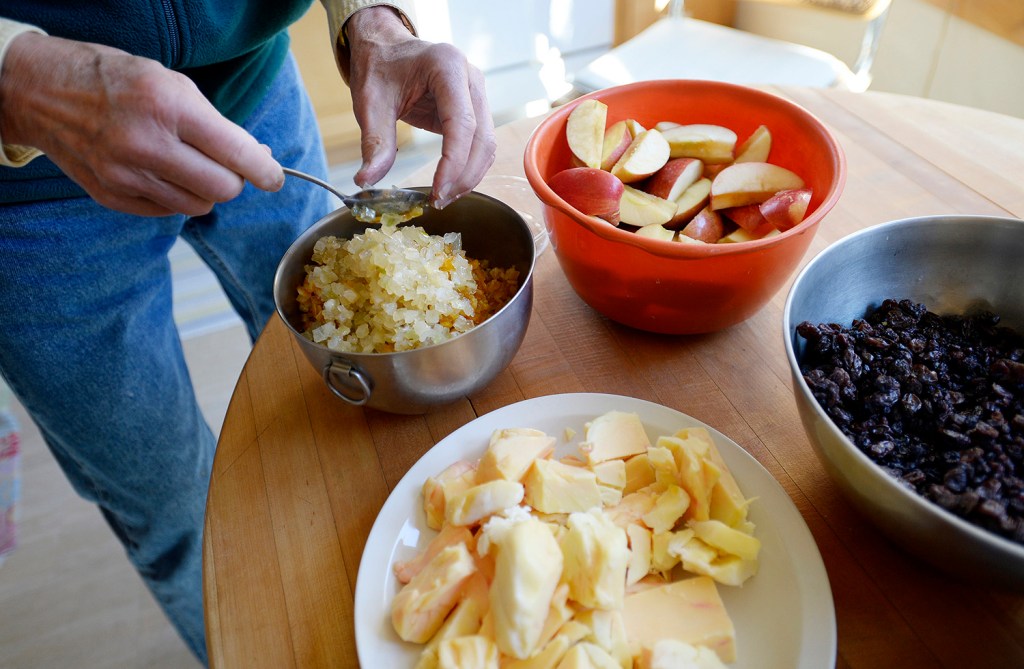
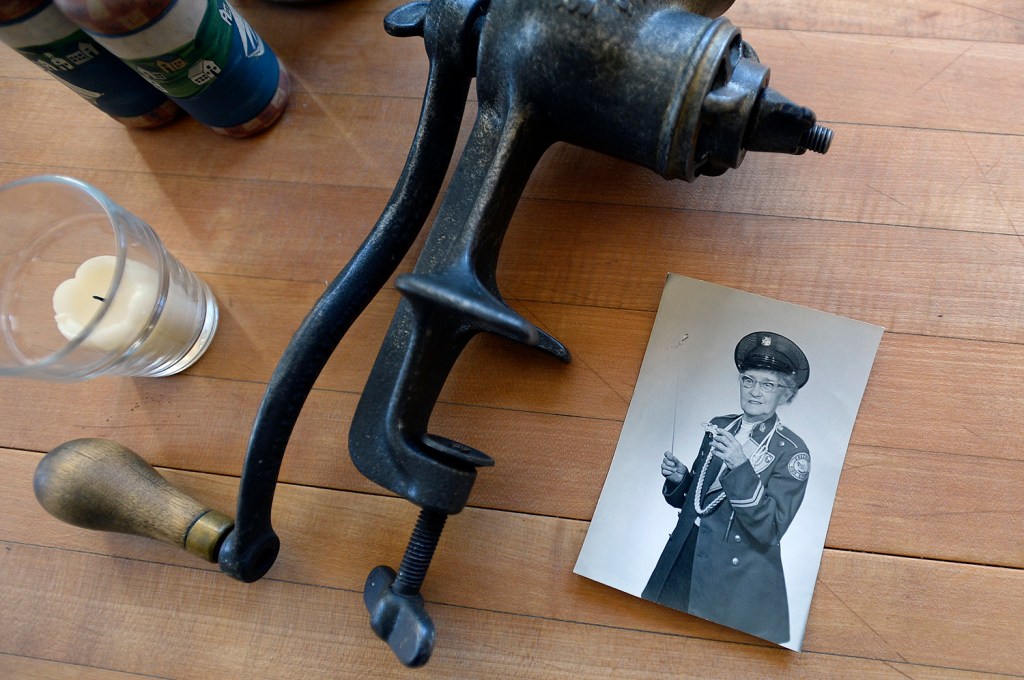
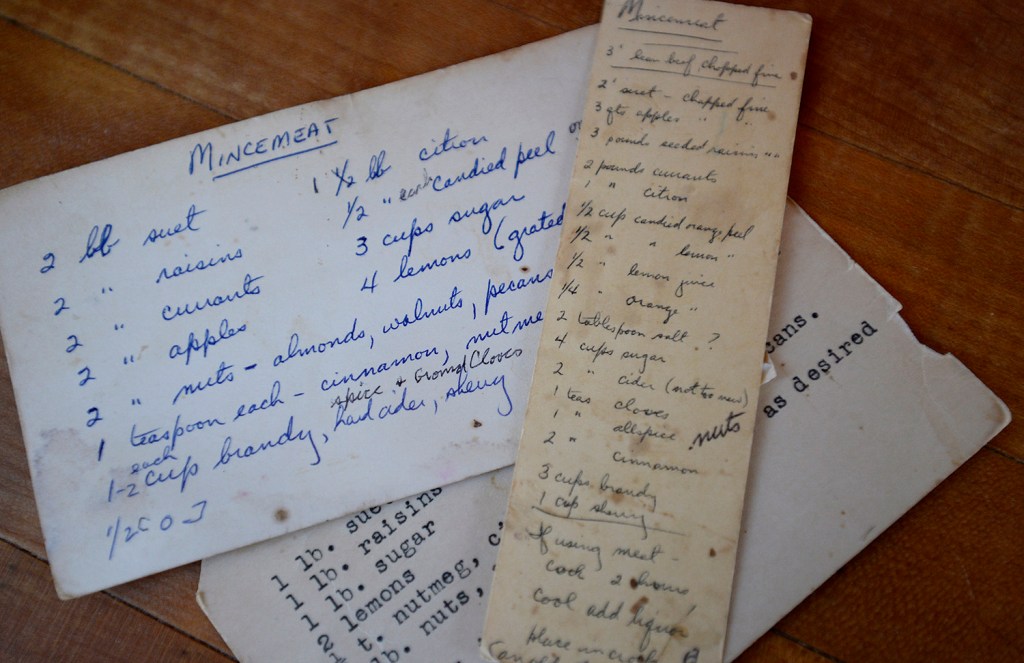

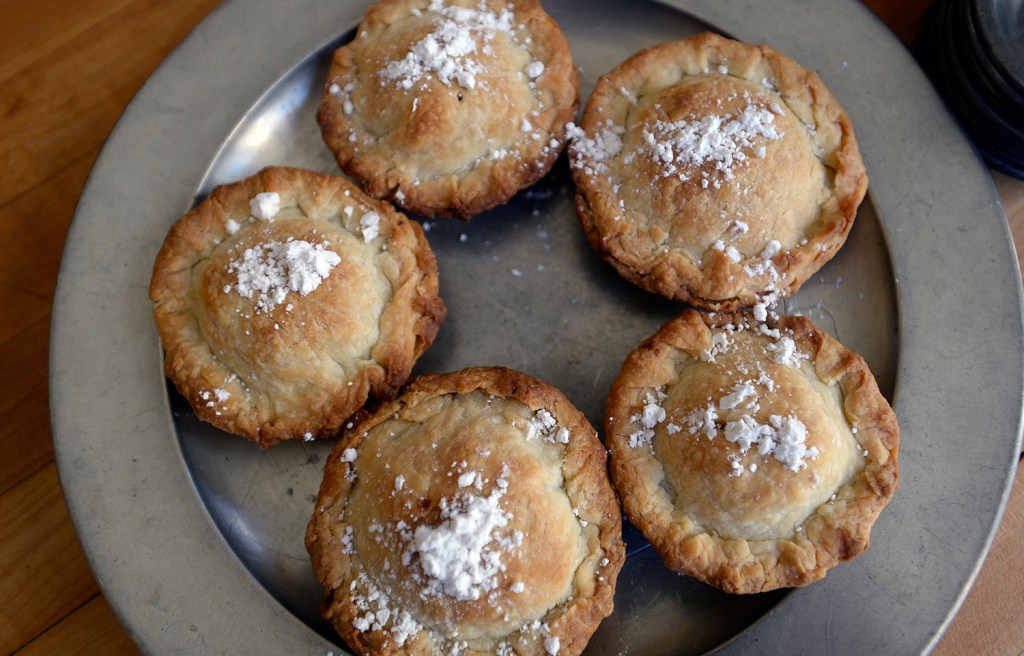

Comments are no longer available on this story